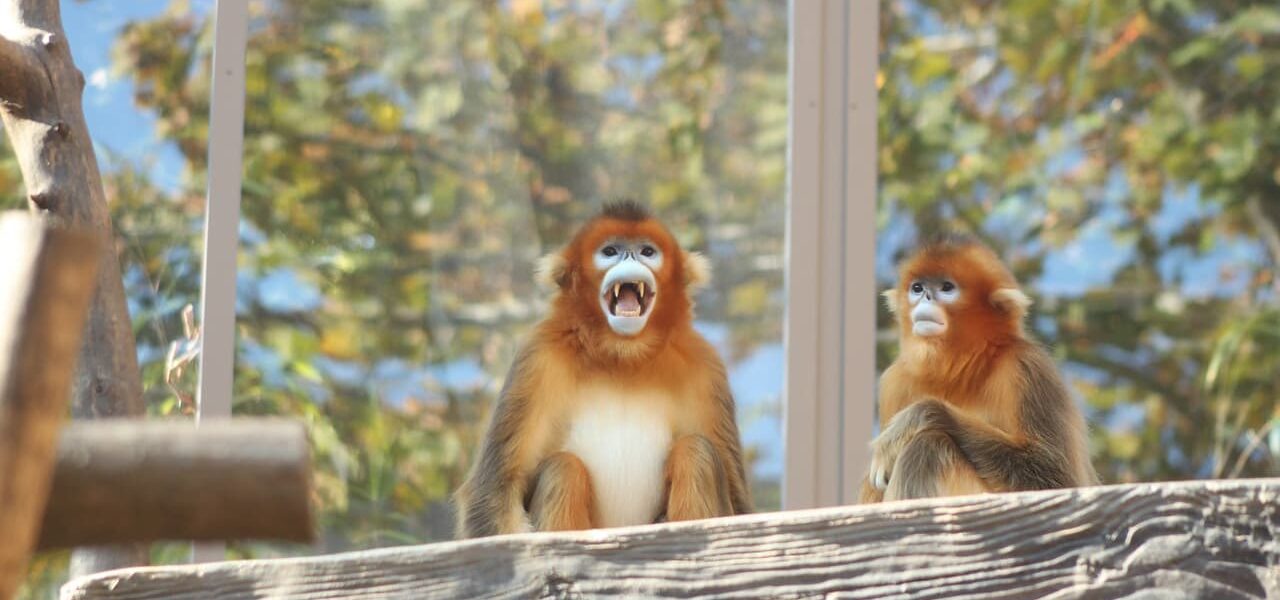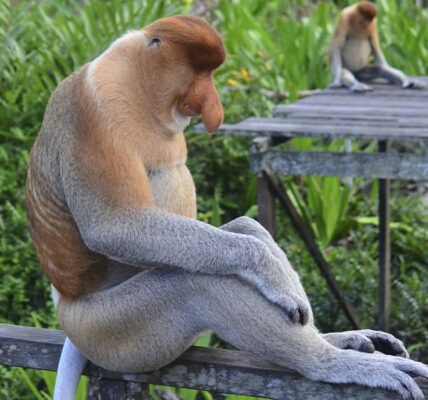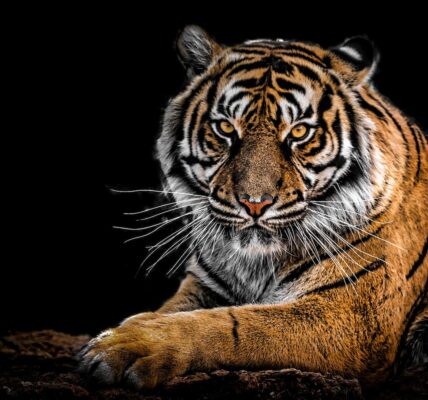The black rhinopithecus (Rhinopithecus bieti) is an exotic animal of mainland China. The species is considered endangered due to habitat destruction and is one of the least studied primate species.
The difficulty of research on these primates is primarily due to their semi-nomadic lifestyle, secretive and difficult habitat. The species Latin name for this rhinopithecus was given in honor of the French missionary Felix Bieu (1838-1901).
Black rhinopithecines are rather large monkeys with a thick coat of black on the back and limbs and white on the lower part of the body. The wool on the sides is also white, in adult males it is especially long; on the shoulders the wool is yellow-gray. The lips of this amazing monkey are pink, the face is pale, and the nostrils are upturned. The cubs are born white, in a few months the coat turns darker. Adult body length of 51 to 83 cm and tail length from 52 to 75 cm. The weight of males is from 15 to 17 kg, weight of females from 9.2 to 12 kg.
Rhinopithecus bieti
Black rhinopithecuses are also called Yunnan golden monkeys, an endangered primate species that only inhabits the territory of China.
It was found that during mating, the lips of the male ready to procreate swell up, occupying nearly half of his muzzle, and turning bright red. These primates, considered an endangered species, are not naturally handsome. However, during the mating season, male rhinopithecines do their best to look more attractive.
Male rhinopithecines are divided into two groups. Some, the more active ones, surround themselves with a group of females, creating real harems. On the eve of the mating period, the lips on their muzzles greatly increase in size, becoming bright red. And the older the male, the redder his lips. Other males ignore mating games, yielding to alpha males, with their lips remaining thin and pale – just like the lips of black rhinopithecines that have not reached sexual maturity. Moreover, this pallor also increases during mating, thus emphasizing the bachelor preferences of the lip owner.
The habitat of the black rhinopithecus bieti is in the highland valley, stretching from the Tibetan county of Mancang to the Yunlong county of Yunnan province /Southwest China/. Zoologists found 13 isolated micropopulations of rhinopithecines. These monkeys live in completely extreme conditions – in mountain coniferous and mixed forests up to 4,700 meters above sea level – higher than any primate species other than humans. It is very cold so high up in the mountains – frost can reign there 280 days a year. The snow cover in these places can reach a meter high. Of course, you can’t survive in such places alone – and rhinopithecines live in flocks of several dozen individuals. Each flock consists of family groups that include an adult male with a harem of three to five females and their offspring. Sometimes large groups of monkeys numbering up to 300 individuals are formed.
Unlike all other monkeys, black rhinopithecines feed mainly on lichens. Lichens are known to regenerate very slowly, taking 10-15 years. Most likely, in order not to deplete their food supply, black rhinopithecines have to roam constantly. These primates move rather quickly and cover large distances in their search for food during the day. The area of the pack can be up to 25 square kilometers, but it can be much more.
The reproduction rate of these primates is extremely low – there is information that females bear one calf every three years.
Black rhinopithecus in the Red Book
Practically nothing was known about black rhinopithecines until the 1990s, when the first studies of their biology were conducted. In 1989, the species had already been listed by the Chinese government as a Category I state protected species. In 1996, the Black Rhinopithecus was included in the Red List of the International Union for Conservation of Nature with the status of “endangered. According to a study conducted by the Zhongnan Forestry Research and Design Institute of the State Forestry Administration, the population of the named monkey species in Yunnan Province does not exceed one thousand, and about one thousand monkeys live in Tibet as well.




